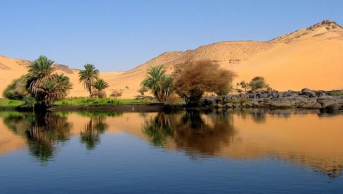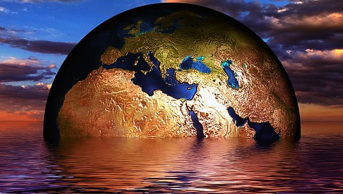Human Security in the Middle East (II) The Modern Pleiades to Track: Seven Dimensions of Human Security in the Middle East

Ancient people attributed great importance to heavens. They looked at the star constellations to guide their lives. They simply planned their activities according to interpretations based on the formations in skies. The Pleiades (also known as the Seven Sisters in English, at-Thurayah in Arabic and Parvin in Persian), is one of these special clusters of bright, highly visible stars. Even before the Islam, the Pleiades were thought to be significant in the region that we know today as the Middle East. The rise of Pleiades at night heralded the rainy season in ancient Arabia, while its rise in the morning announced the hot season. Islamic tradition continued to embrace the distinction attributed to Pleiades, albeit in a different manner. In Islamic interpretations the Pleiades represented both the difficulties related to great distances as well as the intensity of a bright beauty. After thousands of years, people now seem to forget all these past notions of the Pleiades.
When we turn to seven dimensions of human security, we see economic security, food security, health security, environmental security, personal security, community security, political security. All these dimensions are interwoven into the total concept of human security. They are all interrelated and each one of the dimensions cannot be thought as being isolated from the rest. Plainly, improvement in a single dimension of human security inherently goes hand in hand with the others. This interconnectedness of seven dimensions of human security is also analogous to the Pleiades: seven dimensions are not far from each other, like they form a cluster.
First, it is useful to define what these seven dimensions encapsulate. Economic security requires a basic income for individuals. The issue of unemployment, which is strongly related with lack of income, and thus economic security, can become an important factor in political tensions and ethnic violence.Food security can be summarized as physical and economic access to basic food by all people at all times. It is generally the case that the overall availability of food is not the biggest concern, rather the problem often is distribution of food among the population as well as lack of economic power to purchase the food stuff. Here we can see the direct and strong link between the economic security and food security. Health security at least involvesa minimum protection from diseases and unhealthy lifestyles. Again, issues of health security do relate to both rich and poor: while the developing countries’ risks here are majorly related with infectious and parasitic diseases, industrialized countries are also under risk in terms of the illnesses of the circulatory system. However, the across-the-board data reveals that 80 percent of deaths from chronic diseases occurring in low- and middle-income countries. Many Middle Eastern countries fall in this category. Furthermore, particularly poor people in rural areas, not to mention children, are under severe risk. Malnutrition, insufficient access to health services, clean water and other basic necessities are all examples of these risks. Unfortunately, large parts of the Middle East provide fertile grounds for these risks to flourish. Environmental security is about protecting people from the short- and long-term ravages of nature, man-made threats in nature, and deterioration of the natural environment. Global climate change is one of the greatest environmental threat universally. At the regional level, and as to more specific issues, Middle East is threatened by desertification, soil erosion, extreme weather events (floods, floods, heat waves, etc.), diminishing water resources.
Personal security implies protection of people from physical violence, whether from the state or external states, from violent individuals and sub-state actors (e.g. terrorist groups), from domestic abuse and predatory adults and from violent crime. Community security means protection of people from the loss of traditional relationships and values as well as being secure of sectarian and ethnic violence. In terms of these threats, the Middle East represents one of the most notorious examples. Finally, political security is intrinsically linked to respect to human rights, which become most rampant during periods of political unrest, a concept that Middle East has always been very familiar with. Recent examples include Egypt, Iraq, Syria and Yemen.
Before making a conclusion on the relevance of human security in the Middle East, let me say a few words on the possible flaws of still-evolving concept of human security. Certainly, the scholarly conversation on human security created not only supporters, but also critics. Excessive vagueness of the concept, for instance, have been heavily criticized. It has been contended that given the broad definition of the concept, almost any kind of “discomfort” can become a threat to human security. Apart from this, a different reading of the interconnectedness of the dimensions argue that human security suffers from the “overlappings”, which render making policy recommendations rather difficult. While these interventions appear to contribute to the debate on the subject, the human security concept –despite its all potential shortcomings- still continues to enlighten us on the different levels of human security as well as the interconnectedness of the concept of security at large.
To conclude, the region of Middle East at large, epitomizes what would human insecurity look like.So, seven dimensions of human securitycan be regarded as the seven beacons that all Middle East countries need to concentrate on if they sincerely want to improve the conditions of life in their respective territories.These constitute the modern Pleiades for the Middle Eastern decision makers to get inspiration.










